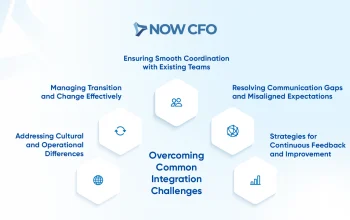Let’s be honest. The creator economy is a beautiful, chaotic beast. One day you’re celebrating a brand deal, the next you’re staring at five different platform dashboards trying to figure out where your money even is. It’s income anarchy. And if you don’t have a system to track it all, you’re basically flying a financial plane with no instruments.
Financial tracking isn’t about restriction. It’s about empowerment. It’s the map that shows you where your revenue streams are flowing, which ones are drying up, and where you should dig a new channel. Let’s dive into the methods that can turn that chaos into clarity.
Laying the Groundwork: The Non-Negotiable Basics
Before we get fancy, you need a foundation. Think of this as setting up your financial command center. Without it, everything else is just guesswork.
1. The Dedicated Business Account
Mixing personal and creator finances is like trying to untangle Christmas lights after they’ve been in the attic for a decade—a massive, frustrating headache. A separate business checking account is your first, and most crucial, line of defense. Route all your income there. Pay yourself a salary from it. This one move instantly simplifies everything.
2. The Income Triage System
You need a single, sacred place to record every single payment that comes in. This could be a simple spreadsheet, a Google Doc, or the notes app on your phone (though, you know, maybe upgrade from that). The goal is triage: capture the info now, organize it later.
For every payment, log:
- Date Received
- Source (YouTube AdSense, Patreon, a specific client, etc.)
- Amount
- Project/Description (e.g., “July Sponsorship – Acme Co.”)
Choosing Your Tracking Arsenal: From Simple to Sophisticated
Okay, groundwork laid. Now, how do you actually build this system? Your choice depends on your volume, tech comfort, and let’s be real, how much time you want to spend on admin.
The Spreadsheet Sanctuary
Don’t underestimate the humble spreadsheet. It’s free, flexible, and entirely under your control. You can start with two simple tabs: one for income, one for expenses.
A basic monthly income tracker might look something like this:
| Date | Platform | Description | Amount ($) |
|---|---|---|---|
| 07/05/2024 | Patreon | Monthly Member Payout | 1,250.00 |
| 07/12/2024 | YouTube | AdSense (June Earnings) | 843.17 |
| 07/18/2024 | Direct Deposit | Sponsorship – Brand X | 2,000.00 |
| 07/25/2024 | Gumroad | Digital Template Sale | 47.50 |
The magic happens when you use formulas to sum totals by platform or month. It’s a bit manual, sure, but it forces you to be hands-on with your numbers. And that’s not a bad thing.
The Power of Digital Tools & Apps
If spreadsheets make you want to nap, dedicated apps are your best friend. They automate the tedious parts. For creators, tools like Wave (which is free for basic accounting), QuickBooks Self-Employed, or even FreshBooks can be game-changers.
Their biggest win? They can often connect to your bank accounts and credit cards, automatically importing and categorizing transactions. You just have to review them. This is a massive time-saver and reduces human error.
Advanced Tracking for a Multi-Platform World
Here’s where we get into the real nitty-gritty of creator finances. You’re not just tracking “income.” You’re tracking a dozen different types of income, each with its own quirks.
Categorizing Your Creator Cash Flow
Break your income into streams. This isn’t just busywork. It tells you what’s working. Is it ad revenue? Affiliate marketing? Your own digital products? Seeing it broken out is illuminating.
- Ad Revenue (YouTube, TikTok Creator Fund, etc.)
- Subscriptions (Patreon, Substack, Twitch)
- Direct Sales (Merch, digital products, courses)
- Brand Deals & Sponsorships (One-off payments)
- Affiliate Income (Commissions from links)
- Donations (Ko-fi, YouTube Super Chats)
- Platform Bounties/Bonuses (Shorts Fund, etc.)
Don’t Forget the Expense Side of the Ledger
Income is only half the story. Tracking your business expenses is critical for tax purposes and for understanding your true profit. That new microphone? Deductible. Editing software subscription? Deductible. Portion of your rent for your home office? You guessed it.
Log every business-related purchase. Keep digital copies of receipts. A good habit is to do a weekly “expense dump” where you log everything from the past seven days so it doesn’t pile up.
The Quarterly Financial Health Check
You’ve been tracking diligently. Now what? Every three months, step back and look at the bigger picture. This is your financial health check. Ask yourself:
- Which income stream grew the most? Which shrank?
- What were my top three expenses? Were they worth it?
- What’s my profit margin after all expenses and taxes?
- Am I on track to hit my annual income goals?
This review is where your tracking pays off. It transforms raw data into a strategic plan. Maybe you realize affiliate income is exploding and you should create more content around that. Or perhaps you see that a particular platform is taking up 80% of your time for only 20% of your revenue. That’s a powerful insight.
Embracing the System
Ultimately, the best financial tracking method is the one you’ll actually use consistently. It doesn’t have to be perfect from day one. Start simple. A spreadsheet and a separate bank account is a phenomenal start. You can always graduate to more sophisticated software later.
The goal isn’t to become an accountant. The goal is to build a financial system that serves your creativity, rather than stifling it. When you know exactly where your money is coming from and where it’s going, you make better decisions. You can invest in better gear with confidence. You can say no to low-ball sponsorship offers because you know your worth. You stop being just a creator, and you become a CEO.
And that is a very powerful shift indeed.








